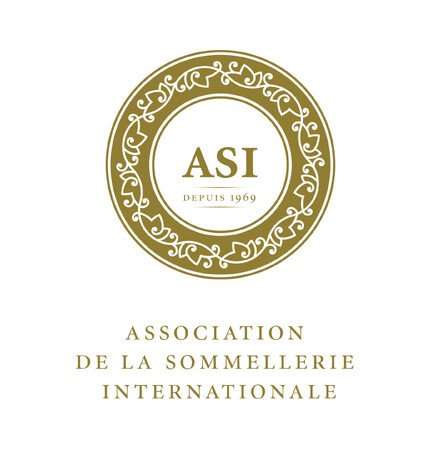Japan Sake Brewers Association Central Association
The Japan Sake Makers Association held the first “Sake Master Class” in Latin America in collaboration with ASI and the Ecuadorian Sommelier Association.
Conveying knowledge of sake to 46 sommeliers from 26 countries in Ecuador ……
On October 31, 2023, the Japan Sake Makers’ Association will hold an event in Ecuador in collaboration with ASI (Association de la Sommellerie Internationale) and the Ecuador Sommelier Association, and will host a workshop in 26 countries and 46 countries, mainly for restaurant and hotel sommeliers. We held a “Sake Master Class” for a total of 50 participants.
[Image 1

On October 31, 2023, the Japan Sake Makers’ Association Central Association (hereinafter referred to as the Central Association) will co-host an event in Ecuador with ASI (Association de la Sommellerie Internationale) and the Ecuadorian Sommelier Association, focusing on sommeliers from restaurants and hotels. We held a “Sake Master Class” for 46 participants from 26 countries. This master class is positioned as one of the programs within the ASI Bootcamp sponsored by ASI, and was the first time the central association held it in Latin America. From Latin America, there were 25 participants from eight countries, including three from the host country, Ecuador.
As of 2022, the Latin American region will account for less than 1% of the total value of sake exports. However, the amount of sake exported to this region from 2013 to 2022 has increased approximately three times, and consumption continues to expand. Quito, the capital of Ecuador, where the master class was held, is home to a top-class Japanese restaurant that was featured in The World’s Best 50 Restaurants sponsored by William Reed. Additionally, in Chile, Japanese cuisine is gaining popularity, affectionately called Nikkei, and Japanese food is becoming more popular. In Chile, in 2021, the Sake category was newly established within the wine category of the Catador World Wine Awards, with 13 breweries entering in the first year. As you can see, in terms of export value, the Latin American region can still be said to be an unexplored region for Japanese sake, but the base of Japanese food and sake is steadily expanding. This master class in Ecuador was led by Michael Trembley, who is in charge of the North American support desk of the Japan Sake Makers Association. In the master class, while touching on the sake manufacturing process, the possibilities of food pairing with sake were discussed from the perspective of umami (umami).
The substances that form Umami are amino acids such as glutamic acid. Sake has about five times as much amino acids (especially glutamic acid) as white wine, so it is an umami-rich drink and has the effect of enhancing the flavor of meals. Michael Trembley said, “The point of this food pairing is that pairing with foods that have glutamic acid and inosinic acid, which are found in sake, can be expected to have an even more synergistic effect.”
Mr. Trembley also revealed the scientific mechanism behind pairing sake with seafood, which is a specialty of sake. Seafood contains unsaturated fatty acids, and high iron and sulfite content can promote a fishy smell. Wine contains a certain amount of iron and sulfites, so it is said to be difficult to pair with seafood, but sake is made with water that contains almost no iron, and also contains sulfites, in order to maintain quality. Since it is not used in sake, it has a structure that does not produce this fishy odor, and he said that this is a wonderful pairing of sake and seafood.
[Image 2

Furthermore, it was introduced in connection with food pairing that sake has a tradition of being enjoyed in different temperature ranges, which is rare among alcoholic beverages in the world. Sake can be served at a wide range of temperatures from 5℃ to 55℃, and each 5℃ has its own unique name. For example, it was introduced that 5 degrees Celsius is snow, 10 degrees Celsius is flowers, and 30 degrees Celsius is sunshine. An important point discussed in this master class is that increasing the temperature at which sake is served increases the sweetness and umami, so changing the temperature at which the same sake is served greatly expands the possibilities for food pairing. It was to have.
After the seminar, Trembley was asked about the topics that the seminar participants were most interested in, and he said, “Many of the participants seemed surprised that sake is so versatile and can complement so many different dishes. In particular, the sommeliers seemed to be very interested in the aspect that it is possible to shape the characteristics of sake by serving it at different temperatures.Also, the story of Umami is rarely heard in the wine world. “I think I made some new discoveries in exploring the pairing of food and various alcoholic beverages.”
One of the seminar participants, a person in charge of Copenhagen’s two-Michelin-starred restaurant “Alchemist,” said that the explanation of the sake manufacturing process at the beginning was the most interesting.
In addition, the head sommelier of Sofitel Legend Santa Clara, one of Colombia’s high-end restaurants, expressed interest in Umami’s pairing theory, and said that he wished he had more time with the seminar. Regarding Latin America’s first Sake Master Class, Trembley said, “It was an incredible opportunity to have up-and-coming sommeliers and veteran sommeliers from around the world come together and experience the charm of sake. It was a great opportunity to ignite their interest in sake,” he concluded.
[Image 3
[Image 5

■About the Association de la Sommellerie International (ASI) A non-profit organization established in Reims (France) in 1969, it is made up of sommelier associations from 63 countries around the world (and observer members of sommelier associations from 5 countries). We are promoting the establishment of sommelier associations in each country and working to improve the skills and status of sommeliers. https://www.asi.info/about/
